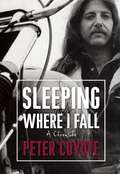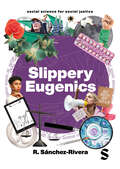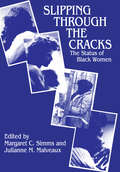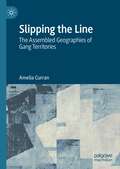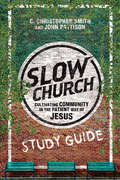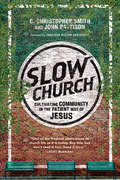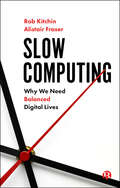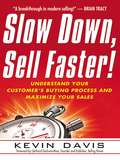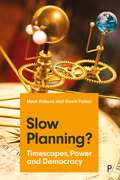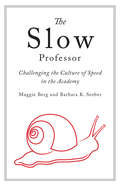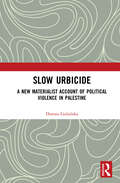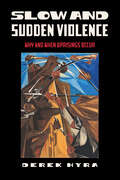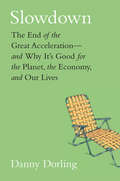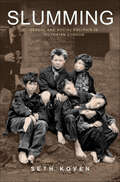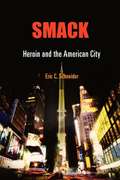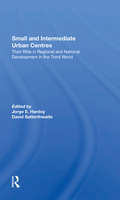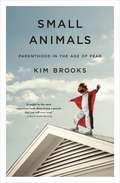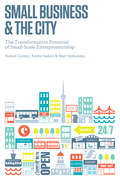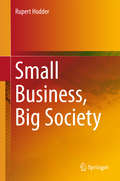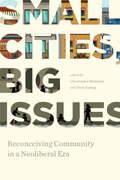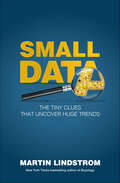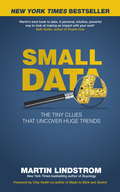- Table View
- List View
Sleeping Where I Fall: A Chronicle
by Peter CoyoteIn his energetic, funny, and intelligent memoir, Peter Coyote relives his fifteen-year ride through the heart of the counterculture -- a journey that took him from the quiet rooms of privilege as the son of an East Coast stockbroker to the riotous life of political street theater and the self-imposed poverty of the West Coast communal movement known as The Diggers. With this innovative collective of artist-anarchists who had assumed as their task nothing less than the re-creation of the nation's political and social soul, Coyote and his companions soon became power players. In prose both graphic and unsentimental, Coyote reveals the corrosive side of love that was once called "free"; the anxieties and occasional terrors of late-night, drug-fueled visits of biker gangs looking to party; and his own quest for the next high. His road through revolution brought him to adulthood and to his major role as a political strategist: from radical communard to the chairman of the California Arts Council, from a street theater apprentice to a motion-picture star.
Slinging Arrows: How (not) to be a professional darts player
by Wayne Mardle'Extremely funny' - Guardian Booze, Bullseyes and (more) BoozeHumanity has come a long way in the 500,000 years since Neanderthal man first started chucking spears around. Or has it? In his blisteringly funny new book, former professional player Wayne Mardle, whose crowd-pleasing antics were even more lively off stage than they were on, blows the lid off one of the UK's biggest televised sports.Known in darts circles as Hawaii 501 on account of his colourful Hawaiian shirts (yours for just forty-five quid - he's got a garage full of them) Mardle remains one of the planet's most recognisable players, having performed on the world stage during a professional career that saw him play all the greats and, quite frankly, lose to most of them. In this witty (frequently), honest (largely), and poignant (twice) guide to life both on and off the oche, Mardle delivers world-class advice - such as why you shouldn't go on a two-day Vegas booze bender before a major PDC final, or how to avoid going live on European TV with a string of expletives so outrageous that clips are still replayed, years later, on Belgian telly. Some are lessons Mardle learned the hard way; others, like why it's best to avoid being sued by a well-known biscuit manufacturer, are gleaned from green-room gossip spanning decades.
Slippery Eugenics: An Introduction to the Critical Studies of Race, Gender and Coloniality (Social Science for Social Justice)
by R. Sánchez-RiveraDiscover the hidden legacy of eugenics and its enduring influence on modern policies and global society. Beginning with the origins of eugenics, Sánchez-Rivera traces the spread of eugenic ideas across different nations, revealing how they intersect with nationalism, populism and individual reproductive rights. Through a comprehensive exploration, this book uncovers how these intertwined legacies still shape our world today offering fresh insights into the subtle forces that define contemporary social and political landscapes, and have lasting impacts on reproductive control, racialization, colonialism, gender norms, and more. The Social Science for Social Justice series challenges the Ivory Tower of academia, providing a platform for academics, journalists, and activists of color to respond to pressing social issues.
Slippery Eugenics: An Introduction to the Critical Studies of Race, Gender and Coloniality (Social Science for Social Justice)
by R. Sánchez-RiveraDiscover the hidden legacy of eugenics and its enduring influence on modern policies and global society. Beginning with the origins of eugenics, Sánchez-Rivera traces the spread of eugenic ideas across different nations, revealing how they intersect with nationalism, populism and individual reproductive rights. Through a comprehensive exploration, this book uncovers how these intertwined legacies still shape our world today offering fresh insights into the subtle forces that define contemporary social and political landscapes, and have lasting impacts on reproductive control, racialization, colonialism, gender norms, and more. The Social Science for Social Justice series challenges the Ivory Tower of academia, providing a platform for academics, journalists, and activists of color to respond to pressing social issues.
Slipping Through the Cracks: Status of Black Women
by Margaret C. SimmsThe problems and special needs of black women are still given inadequate attention in social science analysis. Too often black women are subsumed under the category of ""blacks"" or ""women,"" with little consideration for their unique needs. This volume focuses on black women as a special group. It includes chapters on employment, educational attainment, and job training programs which originated as papers given at a symposium on the economic status of black women, co-sponsored by the Congressional Black Caucus Foundation and The Review of Black Political Economy.
Slipping the Line: The Assembled Geographies of Gang Territories
by Amelia CurranThis book brings a new spatial analysis to gang territories through the concept of the gang assemblage- the variety of actors, contexts, and practices that create and maintain these spaces. This conceptualization helps overcome the tendency of gang literature to succumb to the gang territorial trap, the tendency to assume gang territories are fixed and static containers of gang life. Drawing on multi-sited qualitative fieldwork in central Canada, interviews with gang and non-gang-affiliated residents, police, and administrators show gang territories being made material through a wide variety of daily embodied practices. Recognizing the role of multiple actors encourages a relational ethics of accountability between bodies, practices, and place that challenges the often-naturalized connections between race, space, and crime. Understanding gang space as enacted through embodied material practices provides an alternative way to think through, trace, and disrupt these associations.
Slow Church Study Guide
by C. Christopher Smith John PattisonSlow Churchlectio divinaSuggested videos that can be watched onlineA series of in-depth questions expanded from what is currently in the bookA quote for reflection
Slow Church: Cultivating Community in the Patient Way of Jesus
by Jonathan Wilson-Hartgrove C. Christopher Smith John PattisonSlow Church,
Slow Computing: Why We Need Balanced Digital Lives
by Rob Kitchin Alistair FraserDigital technologies should be making life easier. And to a large degree they are, transforming everyday tasks of work, consumption, communication, travel and play. But they are also accelerating and fragmenting our lives affecting our well-being and exposing us to extensive data extraction and profiling that helps determine our life chances. Initially, the COVID-19 pandemic lockdown seemed to create new opportunities for people to practice ‘slow computing’, but it quickly became clear that it was as difficult, if not more so, than during normal times. Is it then possible to experience the joy and benefits of computing, but to do so in a way that asserts individual and collective autonomy over our time and data? Drawing on the ideas of the ‘slow movement’, Slow Computing sets out numerous practical and political means to take back control and counter the more pernicious effects of living digital lives.
Slow Down, Sell Faster!: Understand Your Customer's Buying Process and Maximize Your Sales
by Kevin DavisFaster sales pitches won&’t lead to faster sales. The key to speeding up the sales process is to actually slow down and get in sync with your customer&’s buying process.The biggest mistake salespeople make in their careers is equating a faster pitch with a faster close. Sales guru Kevin Davis shows you how to slow down and focus on the customer buying process, so they can identify and quantify customers&’ real needs--and adapt their sales pitches accordingly.In Slow Down, Sell Faster!, you&’ll learn how to:Match your sales behaviors to your customers&’ needs throughout the buying processGet more appointments by using a problem-focused approachCombat your most lethal competitor: customer complacencyUse probing questions to diagnose small problems that point to bigger needsMaster the complicated politics of complex salesOvercome common selling dilemmasDavis introduces a simple yet powerful method for buyer-focused selling that is practical, repeatable, and easily customizable. This buyer-focused approach extends to proposals and presentations, loyalty, retention, and, of course, cultivating more business.Packed with examples from the author's extensive experience and detailed research on customer buying patterns, Slow Down, Sell Faster! offers an alternative to traditional selling that leads to increased sales--and happier customers.
Slow Planning?: Timescapes, Power and Democracy
by Gavin Parker Mark DobsonA deep exploration on how questions of time and its organisation affect planning practice, this book questions ‘project speed’: where time to think, deliberate and plan has been squeezed. The authors demonstrate the many benefits of slow planning for the key participants, multiple interests and planning system overall.
Slow Professor: Challenging the Culture of Speed in the Academy
by Maggie Berg Barbara SeeberIf there is one sector of society that should be cultivating deep thought in itself and others, it is academia. Yet the corporatisation of the contemporary university has sped up the clock, demanding increased speed and efficiency from faculty regardless of the consequences for education and scholarship.In The Slow Professor, Maggie Berg and Barbara K. Seeber discuss how adopting the principles of the Slow movement in academic life can counter this erosion of humanistic education. Focusing on the individual faculty member and his or her own professional practice, Berg and Seeber present both an analysis of the culture of speed in the academy and ways of alleviating stress while improving teaching, research, and collegiality. The Slow Professor will be a must-read for anyone in academia concerned about the frantic pace of contemporary university life.
Slow Urbicide: A New Materialist Account of Political Violence in Palestine
by Dorota GolańskaThe book presents a new materialist understanding of acts of deliberate destruction of the built environment and, specifically, of the politics of aggressive spatial containment and regularization of urbanity employed within the conflict in Israel/Palestine. Building on recent scholarship on slow violence and urbicidal policies, it discusses the different dimensions of the violence against the urban space, as well as exposes the complex material-semiotic character of the urban territory and of its destruction. By referring to the concepts of “ethno-territoriality” and “the right to the city,” the book aims to generate an enhanced understanding of problems situated at the overlap of urban studies and investigations of state-sponsored violence, focusing specifically on issues related to urban warfare. Adopting a new materialist perspective, the book is a searing examination of political violence in our times. The volume will be of great interest to scholars and researchers of political science, international relations, cultural studies, and urban studies. It will also appeal to NGO professionals and activists across the world.
Slow and Sudden Violence: Why and When Uprisings Occur
by Derek HyraExposing the roots of racial unrest that consistently harm Black communities In Slow and Sudden Violence, Derek Hyra links police violence to an ongoing cycle of racial and spatial urban redevelopment repression. By delving into the real estate histories of St. Louis and Baltimore, he shows how housing and community development policies advance neighborhood inequality by segregating, gentrifying, and displacing Black communities. Repeated decisions to "upgrade" the urban fabric and uproot low-income Black populations have resulted in pockets of poverty inhabited by people experiencing displacement trauma and police surveillance. These interconnected sets of divestments and accumulated frustrations have contributed to eruptions of violence in response to tragic, unjust police killings. To confront American unrest, Hyra urges that we end racialized policing, stop Black community destruction and displacement, and reduce neighborhood inequality.
Slowdown: The End of the Great Acceleration—and Why It's Good for the Planet, the Economy, and Our Lives
by Danny DorlingA powerful and counterintuitive argument that we should welcome the current slowdown—of population growth, economies, and technological innovation Drawing from an incredibly rich trove of global data, this groundbreaking book reveals that human progress has been slowing down since the early 1970s. Danny Dorling uses compelling visualizations to illustrate how fertility rates, growth in GDP per person, increases in life expectancy, and even the frequency of new social movements have all steadily declined over the last few generations. Perhaps most surprising of all is the fact that even as new technologies frequently reshape our everyday lives and are widely believed to be propelling our civilization into new and uncharted waters, the rate of technological progress is also rapidly dropping. Rather than lament this turn of events, Dorling embraces it as a moment of promise and a move toward stability, and he notes that many of the older great strides in progress that have defined recent history also brought with them widespread warfare, divided societies, and massive inequality.
Slum Clearance: The Social and Administrative Context in England and Wales (Routledge Library Editions: Urban Studies)
by John English Peter Norman Ruth MadiganOriginally published in 1976. Slum clearance is a particularly significant process because it places the ordinary citizen in a state of extreme dependence on his local authority. The local authority not only destroys his existing environment but controls access to a replacement council house. This book highlights both the control over the life chances of individual citizens which local government can exercise and the potential impotence of citizens caught up in a complex bureaucratic process. It investigates the difficulties faced by individuals in exercising even the rights and choices which are ostensibly provided by the existing structure. The book also seeks to apply theories of urban sociology in exploring the control of access to public housing. The essential objective of this study is demystification of the administrative processes of slum clearance and rehousing through analysis of local authority bureaucracy and its impact on individuals.
Slumming: Sexual and Social Politics in Victorian London
by Seth KovenIn the 1880s, fashionable Londoners left their elegant homes and clubs in Mayfair and Belgravia and crowded into omnibuses bound for midnight tours of the slums of East London. A new word burst into popular usage to describe these descents into the precincts of poverty to see how the poor lived: slumming. In this captivating book, Seth Koven paints a vivid portrait of the practitioners of slumming and their world: who they were, why they went, what they claimed to have found, how it changed them, and how slumming, in turn, powerfully shaped both Victorian and twentieth-century understandings of poverty and social welfare, gender relations, and sexuality. The slums of late-Victorian London became synonymous with all that was wrong with industrial capitalist society. But for philanthropic men and women eager to free themselves from the starched conventions of bourgeois respectability and domesticity, slums were also places of personal liberation and experimentation. Slumming allowed them to act on their irresistible "attraction of repulsion" for the poor and permitted them, with society's approval, to get dirty and express their own "dirty" desires for intimacy with slum dwellers and, sometimes, with one another. Slumming elucidates the histories of a wide range of preoccupations about poverty and urban life, altruism and sexuality that remain central in Anglo-American culture, including the ethics of undercover investigative reporting, the connections between cross-class sympathy and same-sex desire, and the intermingling of the wish to rescue the poor with the impulse to eroticize and sexually exploit them. By revealing the extent to which politics and erotics, social and sexual categories overflowed their boundaries and transformed one another, Koven recaptures the ethical dilemmas that men and women confronted--and continue to confront--in trying to "love thy neighbor as thyself."
Smack
by Eric C. SchneiderWhy do the vast majority of heroin users live in cities? In his provocative history of heroin in the United States, Eric C. Schneider explains what is distinctively urban about this undisputed king of underworld drugs.During the twentieth century, New York City was the nation's heroin capital--over half of all known addicts lived there, and underworld bosses like Vito Genovese, Nicky Barnes, and Frank Lucas used their international networks to import and distribute the drug to cities throughout the country, generating vast sums of capital in return. Schneider uncovers how New York, as the principal distribution hub, organized the global trade in heroin and sustained the subcultures that supported its use.Through interviews with former junkies and clinic workers and in-depth archival research, Schneider also chronicles the dramatically shifting demographic profile of heroin users. Originally popular among working-class whites in the 1920s, heroin became associated with jazz musicians and Beat writers in the 1940s. Musician Red Rodney called heroin the trademark of the bebop generation. "It was the thing that gave us membership in a unique club," he proclaimed. Smack takes readers through the typical haunts of heroin users--52nd Street jazz clubs, Times Square cafeterias, Chicago's South Side street corners--to explain how young people were initiated into the drug culture.Smack recounts the explosion of heroin use among middle-class young people in the 1960s and 1970s. It became the drug of choice among a wide swath of youth, from hippies in Haight-Ashbury and soldiers in Vietnam to punks on the Lower East Side. Panics over the drug led to the passage of increasingly severe legislation that entrapped heroin users in the criminal justice system without addressing the issues that led to its use in the first place. The book ends with a meditation on the evolution of the war on drugs and addresses why efforts to solve the drug problem must go beyond eliminating supply.
Small And Intermediate Urban Centres: Their Role In Regional And National Development In The Third World
by David Satterthwaite Jorge Hardoy Denise StewartThis book is the result of contributions, help and support from numerous people and several agencies. We are particularly grateful to the Swedish Agency for Research Cooperation with Developing Countries, the Swedish Council for Building Research and the United Nations Centre for Human Settlements (Habitat) for funding the work on which this volume is based - and doing so before the subject had come to be regarded as important and relevant. Within these agencies, special thanks is due to Olle Edqvist, Pietro Garau, Bruce Hyland, Bob and Ingrid Munro and Arcot Ramachandran. We are also grateful to our friends and colleagues in IIED's Human Settlements Programme who have worked with us on this subject - Jane Bicknell, Silvia Blitzer, Ana Maria Cabrera, Maria Graciela Caputo and Julio Davila. Julio Davila deserves special thanks for his help in refining and editing the final text; so too do Jane Bicknell and Ana Maria Cabrera for patiently putting up with endless last minute changes to the text.
Small Animals: Parenthood in the Age of Fear
by Kim Brooks"It might be the most important book about being a parent that you will ever read." —Emily Rapp Black, New York Times bestselling author of The Still Point of the Turning World"Brooks's own personal experience provides the narrative thrust for the book — she writes unflinchingly about her own experience.... Readers who want to know what happened to Brooks will keep reading to learn how the case against her proceeds, but it's Brooks's questions about why mothers are so judgmental and competitive that give the book its heft." —NPROne morning, Kim Brooks made a split-second decision to leave her four-year old son in the car while she ran into a store. What happened would consume the next several years of her life and spur her to investigate the broader role America’s culture of fear plays in parenthood. In Small Animals, Brooks asks, Of all the emotions inherent in parenting, is there any more universal or profound than fear? Why have our notions of what it means to be a good parent changed so radically? In what ways do these changes impact the lives of parents, children, and the structure of society at large? And what, in the end, does the rise of fearful parenting tell us about ourselves?Fueled by urgency and the emotional intensity of Brooks’s own story, Small Animals is a riveting examination of the ways our culture of competitive, anxious, and judgmental parenting has profoundly altered the experiences of parents and children. In her signature style—by turns funny, penetrating, and always illuminating—which has dazzled millions of fans and been called "striking" by New York Times Book Review and "beautiful" by the National Book Critics Circle, Brooks offers a provocative, compelling portrait of parenthood in America and calls us to examine what we most value in our relationships with our children and one another.
Small Business and the City
by Rafael Gomez Andre Isakov Matthew SemanskyIn Small Business and the City, Rafael Gomez, Andre Isakov, and Matt Semansky highlight the power of small-scale entrepreneurship to transform local neighbourhoods and the cities they inhabit. Studying the factors which enable small businesses to survive and thrive, they highlight the success of a Canadian concept which has spread worldwide: the Business Improvement Area (BIA). BIAs allow small-scale entrepreneurs to pool their resources with like-minded businesses, becoming sources of urban rejuvenation, magnets for human talent, and incubators for local innovation in cities around the globe.Small Business and the City also analyses the policies necessary to support this urban vitality, describing how cities can encourage and support locally owned independent businesses. An inspiring account of the dynamism of urban life, Small Business and the City introduces a new "main street agenda" for the twenty-first century city.
Small Business, Big Society
by Rupert HodderThis book considers how small businesses stir up changes in social relationships and what these changes mean for wider society. From this emerges a challenging and provocative discussion on the problems facing both the developing and developed worlds. Development, it argues, is written into social relationships and growth follows attempts to avoid the market’s degenerative effects. What this discussion means for development practice, and for thought in the social sciences more generally, is also considered. If there is a watchword for development practice, then it is acceptance – acceptance of more social, less prescriptive, and far more experimental modes of working. As for the implications of these ideas for social science, these may be described well enough as an economy of ontology.
Small Cities, Big Issues: Reconceiving Community in a Neoliberal Era
by Christopher Walmsley Terry KadingSmall Canadian cities confront serious social issues as a result of the neoliberal economic restructuring practiced by both federal and provincial governments since the 1980s. Drastic spending reductions and ongoing restraint in social assistance, income supports, and the provision of affordable housing, combined with the offloading of social responsibilities onto municipalities, has contributed to the generalization of social issues once chiefly associated with Canada’s largest urban centres. As the investigations in this volume illustrate, while some communities responded to these issues with inclusionary and progressive actions others were more exclusionary and reactive—revealing forms of discrimination, exclusion, and “othering” in the implementation of practices and policies. Importantly, however their investigations reveal a broad range of responses to the social issues they face. No matter the process and results of the proposed solutions, what the contributors uncovered were distinctive attributes of the small city as it struggles to confront increasingly complex social issues. If local governments accept a social agenda as part of its responsibilities, the contributors to Small Cities, Big Issues believe that small cities can succeed in reconceiving community based on the ideals of acceptance, accommodation, and inclusion.
Small Data: The Tiny Clues That Uncover Huge Trends
by Martin LindstromMartin Lindstrom, a modern-day Sherlock Holmes, harnesses the power of “small data” in his quest to discover the next big thingHired by the world's leading brands to find out what makes their customers tick, Martin Lindstrom spends 300 nights a year in strangers’ homes, carefully observing every detail in order to uncover their hidden desires, and, ultimately, the clues to a multi-million dollar product. Lindstrom connects the dots in this globetrotting narrative that will enthrall enterprising marketers, as well as anyone with a curiosity about the endless variations of human behavior. You’ll learn…• How a noise reduction headset at 35,000 feet led to the creation of Pepsi’s new trademarked signature sound.• How a worn down sneaker discovered in the home of an 11-year-old German boy led to LEGO’s incredible turnaround.• How a magnet found on a fridge in Siberia resulted in a U.S. supermarket revolution.• How a toy stuffed bear in a girl’s bedroom helped revolutionize a fashion retailer’s 1,000 stores in 20 different countries.• How an ordinary bracelet helped Jenny Craig increase customer loyalty by 159% in less than a year.• How the ergonomic layout of a car dashboard led to the redesign of the Roomba vacuum.
Small Data: The Tiny Clues That Uncover Huge Trends
by Martin Lindstrom CompanyThe New York Times Bestseller named one of the "Most Important Books of 2016" by Inc, and a Forbes 2016 "Must Read Business Book"'If you love 'Bones' and 'CSI', this book is your kind of candy' Paco Underhill, author of Why We Buy'Martin's best book to date. A personal, intuitive, powerful way to look at making an impact with your work' Seth Godin, author of Purple CowMartin Lindstrom, one of Time Magazine's 100 Most Influential People in The World and a modern-day Sherlock Holmes, harnesses the power of "small data" in his quest to discover the next big thing.In an era where many believe Big Data has rendered human perception and observation 'old-school' or passé, Martin Lindstrom shows that mining and matching technological data with up-close psychological insight creates the ultimate snapshot of who we really are and what we really want. He works like a modern-day Sherlock Holmes, accumulating small clues - the progressively weaker handshakes of Millenials, a notable global decrease in the use of facial powder, a change in how younger consumers approach eating ice cream cones - to help solve a stunningly diverse array of challenges. In Switzerland, a stuffed teddy bear in a teenage girl's bedroom helped revolutionise 1,000 stores - spread across twenty countries - for one of Europe's largest fashion retailers. In Dubai, a distinctive bracelet strung with pearls helped Jenny Craig offset its declining membership in the United States and increase loyalty by 159% in only one year. In China, the look of a car dashboard led to the design of the iRobot, or Roomba, floor cleaner - a great success story.SMALL DATA combines armchair travel with forensic psychology in an interlocking series of international clue-gathering detective stories. It shows Lindstrom using his proprietary CLUES Framework - where big data is merely one part of the overall puzzle - to get radically close to consumers and come up with the counter-intuitive insights that have in some cases helped transform entire industries. SMALL DATA presents a rare behind-the-scenes look at what it takes to create global brands, and reveals surprising and counter-intuitive truths about what connects us all as humans.
